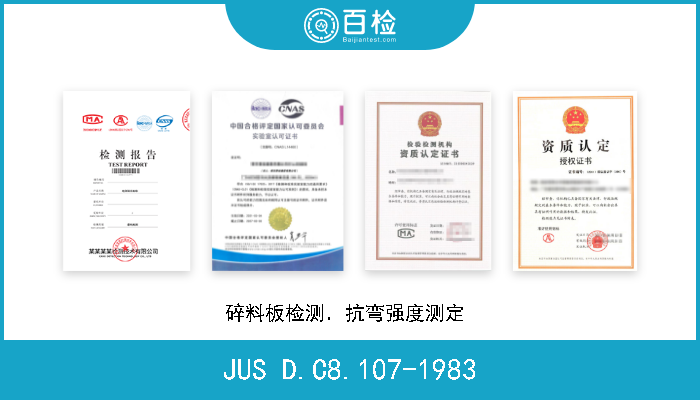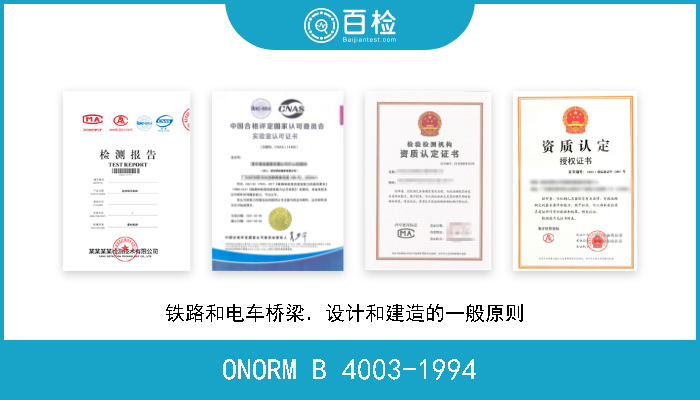SAE J 406-2009 钢的淬硬性测定方法
百检网 2021-07-15
标准号:SAE J 406-2009
中文标准名称:钢的淬硬性测定方法
英文标准名称:Methods of Determining Hardenability of Steels
标准类型:H11
发布日期:2009/3/27 12:00:00
实施日期:1999/12/31 12:00:00
中国标准分类号:H11
国际标准分类号:77.040.30
引用标准:DIN 50191-1987;ASTM A 255-2007;JIS G 0561-2006;SAE J 417-1983;SAE EA 406
适用范围:This SAE Standard prescribes the procedure for making hardenability tests and recording results on shallow and medium hardening steels, but not deep hardening steels that will normally air harden. Included are procedures using the 25 mm (1 in) standard hardenability end- quench specimen for both medium and shallow hardening steels and subsize method for bars less than 32 mm (1-1/4 in) in diameter. Methods for determining case hardenability of carburized steels are given in SAE J1975. Any hardenability test made under other conditions than those given in this document will not be deemed standard and will be subject to agreement between supplier and user. Whenever check tests are made, all laboratories concerned must arrange to use the same alternate procedure with reference to test specimen and method of grinding for hardness testing. For routine testing of the hardenability of successive heats of steel required to have hardenability within certain limits, it is sufficient to designate hardenability simply in terms of distance from the quenched end to the point at which a certain hardness is obtained. This designation may also be adequate for comparing steels of different compositions to see whether they have similar hardenability. Hardenability limits for specifying steel in this manner are obtained by measuring the hardenability of a steel which has proved satisfactory for the use intended. The hardenability test may be used in this way as an empirical test. For new components where manufacturing experience is lacking, hardenability data may be effectively used to estimate the hardness profile provided by any given steel. Attendantly, the ability to predict hardenability from chemical composition has become increasingly important when comparing various steel grades or developing new steels for specific applications. One such procedure is described in Appendix A. Other hardenability prediction methods are available from the selected references in Section 2. However, it should be emphasized that the use of any hardenability prediction procedure does not preclude the importance of conducting Jominy end-quench tests to determine the actual hardenability of any specific grade of steel. Hardenability data may be used to estimate hardnesses obtainable with any steel in new machine parts not yet in production and not similar to any parts on which production experience is available. Various hardenability application methods are described in the selected references, Section 2.1, 23 to 25. It appears none of these methods are precise, but these are often useful for estimation purposes. Final correlation on actual parts is necessary.
中文标准名称:钢的淬硬性测定方法
英文标准名称:Methods of Determining Hardenability of Steels
标准类型:H11
发布日期:2009/3/27 12:00:00
实施日期:1999/12/31 12:00:00
中国标准分类号:H11
国际标准分类号:77.040.30
引用标准:DIN 50191-1987;ASTM A 255-2007;JIS G 0561-2006;SAE J 417-1983;SAE EA 406
适用范围:This SAE Standard prescribes the procedure for making hardenability tests and recording results on shallow and medium hardening steels, but not deep hardening steels that will normally air harden. Included are procedures using the 25 mm (1 in) standard hardenability end- quench specimen for both medium and shallow hardening steels and subsize method for bars less than 32 mm (1-1/4 in) in diameter. Methods for determining case hardenability of carburized steels are given in SAE J1975. Any hardenability test made under other conditions than those given in this document will not be deemed standard and will be subject to agreement between supplier and user. Whenever check tests are made, all laboratories concerned must arrange to use the same alternate procedure with reference to test specimen and method of grinding for hardness testing. For routine testing of the hardenability of successive heats of steel required to have hardenability within certain limits, it is sufficient to designate hardenability simply in terms of distance from the quenched end to the point at which a certain hardness is obtained. This designation may also be adequate for comparing steels of different compositions to see whether they have similar hardenability. Hardenability limits for specifying steel in this manner are obtained by measuring the hardenability of a steel which has proved satisfactory for the use intended. The hardenability test may be used in this way as an empirical test. For new components where manufacturing experience is lacking, hardenability data may be effectively used to estimate the hardness profile provided by any given steel. Attendantly, the ability to predict hardenability from chemical composition has become increasingly important when comparing various steel grades or developing new steels for specific applications. One such procedure is described in Appendix A. Other hardenability prediction methods are available from the selected references in Section 2. However, it should be emphasized that the use of any hardenability prediction procedure does not preclude the importance of conducting Jominy end-quench tests to determine the actual hardenability of any specific grade of steel. Hardenability data may be used to estimate hardnesses obtainable with any steel in new machine parts not yet in production and not similar to any parts on which production experience is available. Various hardenability application methods are described in the selected references, Section 2.1, 23 to 25. It appears none of these methods are precise, but these are often useful for estimation purposes. Final correlation on actual parts is necessary.
百检能给您带来哪些改变?
1、检测行业全覆盖,满足不同的检测;
2、实验室全覆盖,就近分配本地化检测;
3、工程师一对一服务,让检测更精准;
4、免费初检,初检不收取检测费用;
5、自助下单 快递免费上门取样;
6、周期短,费用低,服务周到;
7、拥有CMA、CNAS、CAL等权威资质;
8、检测报告权威有效、中国通用;
客户案例展示
版权与免责声明
①本网注名来源于“互联网”的所有作品,版权归原作者或者来源机构所有,如果有涉及作品内容、版权等问题,请在作品发表之日起一个月内与本网联系,联系邮箱service@baijiantest.com,否则视为默认百检网有权进行转载。
②本网注名来源于“百检网”的所有作品,版权归百检网所有,未经本网授权不得转载、摘编或利用其它方式使用。想要转载本网作品,请联系:service@baijiantest.com。已获本网授权的作品,应在授权范围内使用,并注明"来源:百检网"。违者本网将追究相关法律责任。
③本网所载作品仅代表作者独立观点,不代表百检立场,用户需作出独立判断,如有异议或投诉,请联系service@baijiantest.com
最新资讯

















